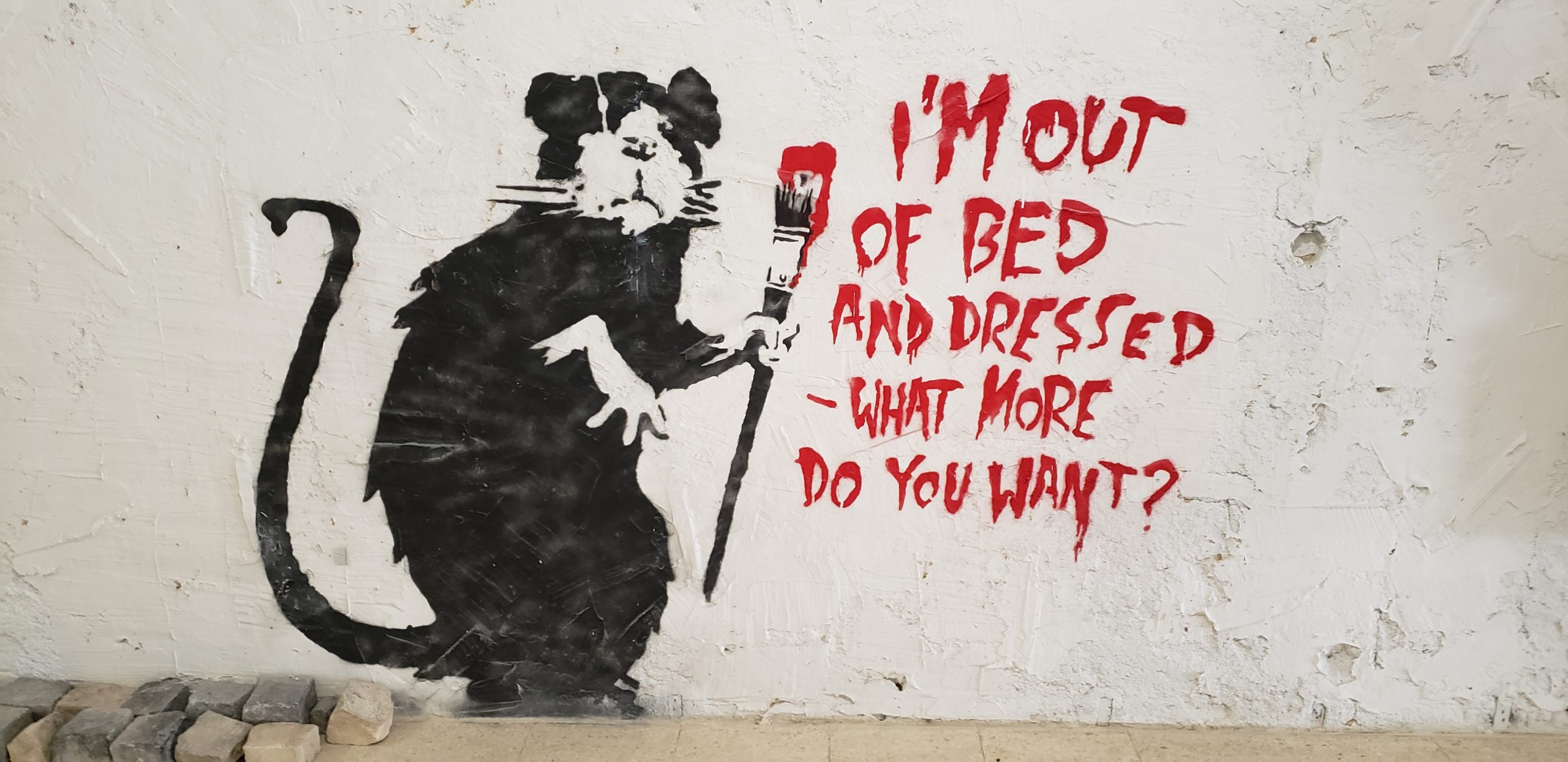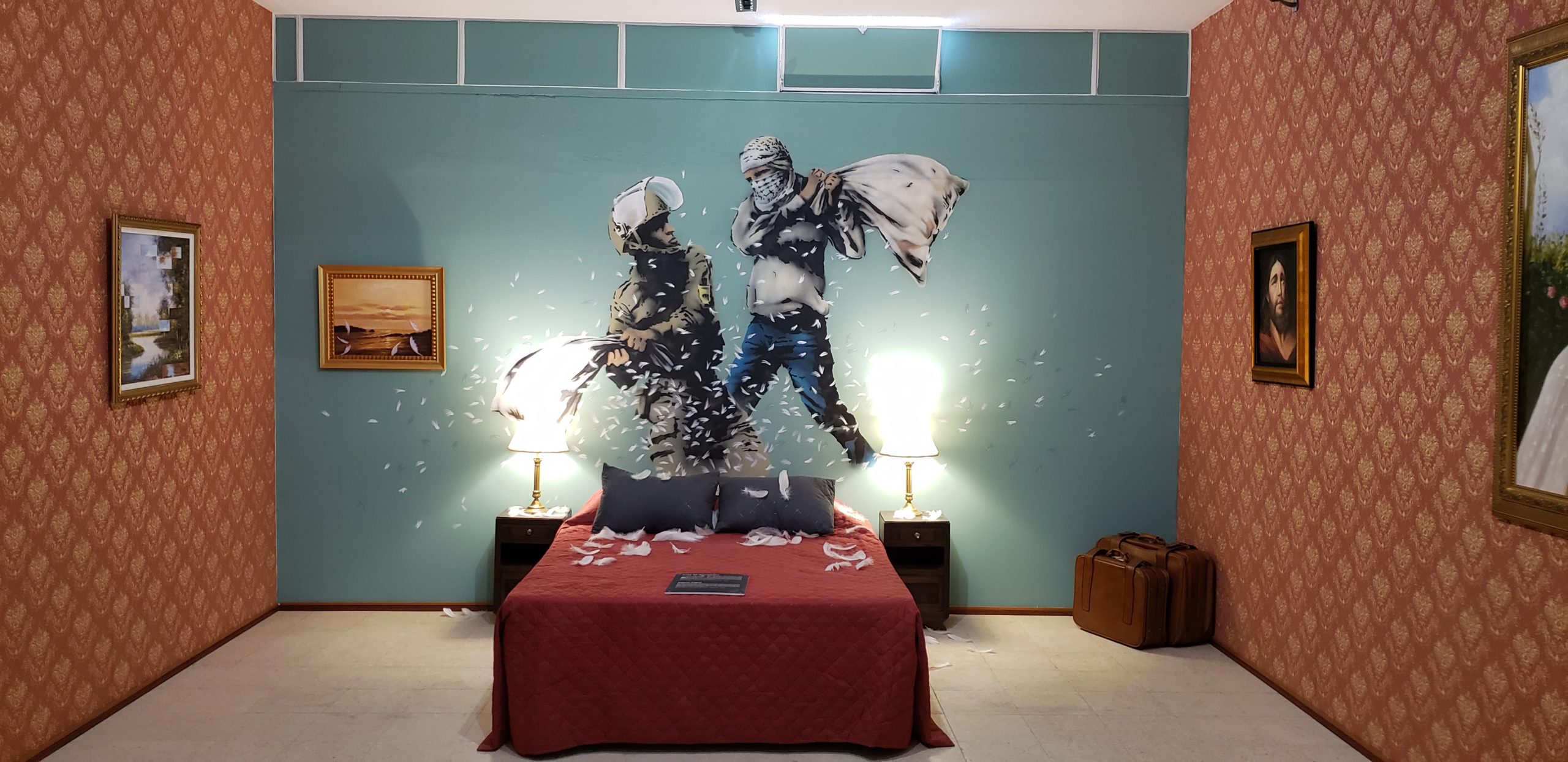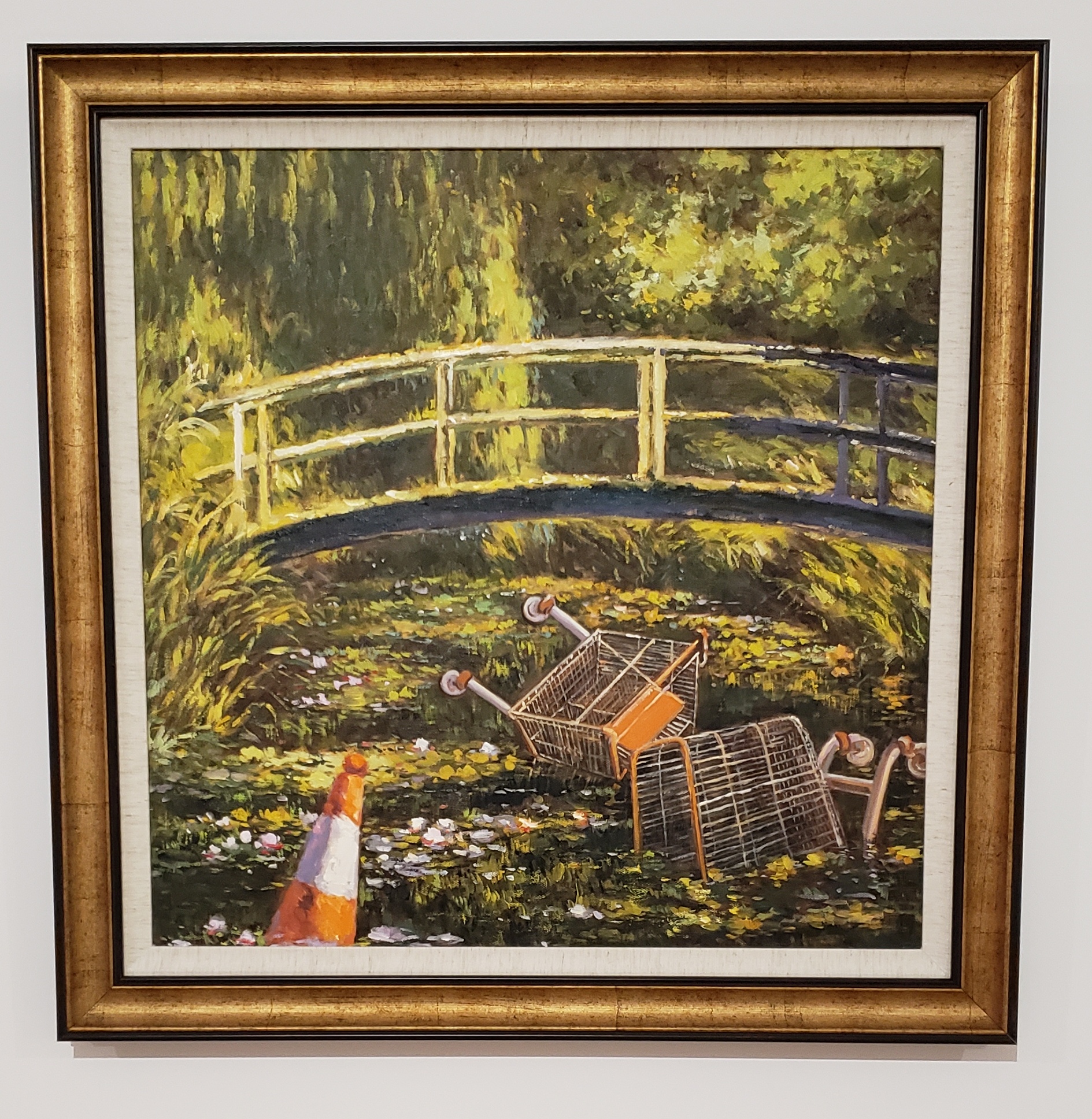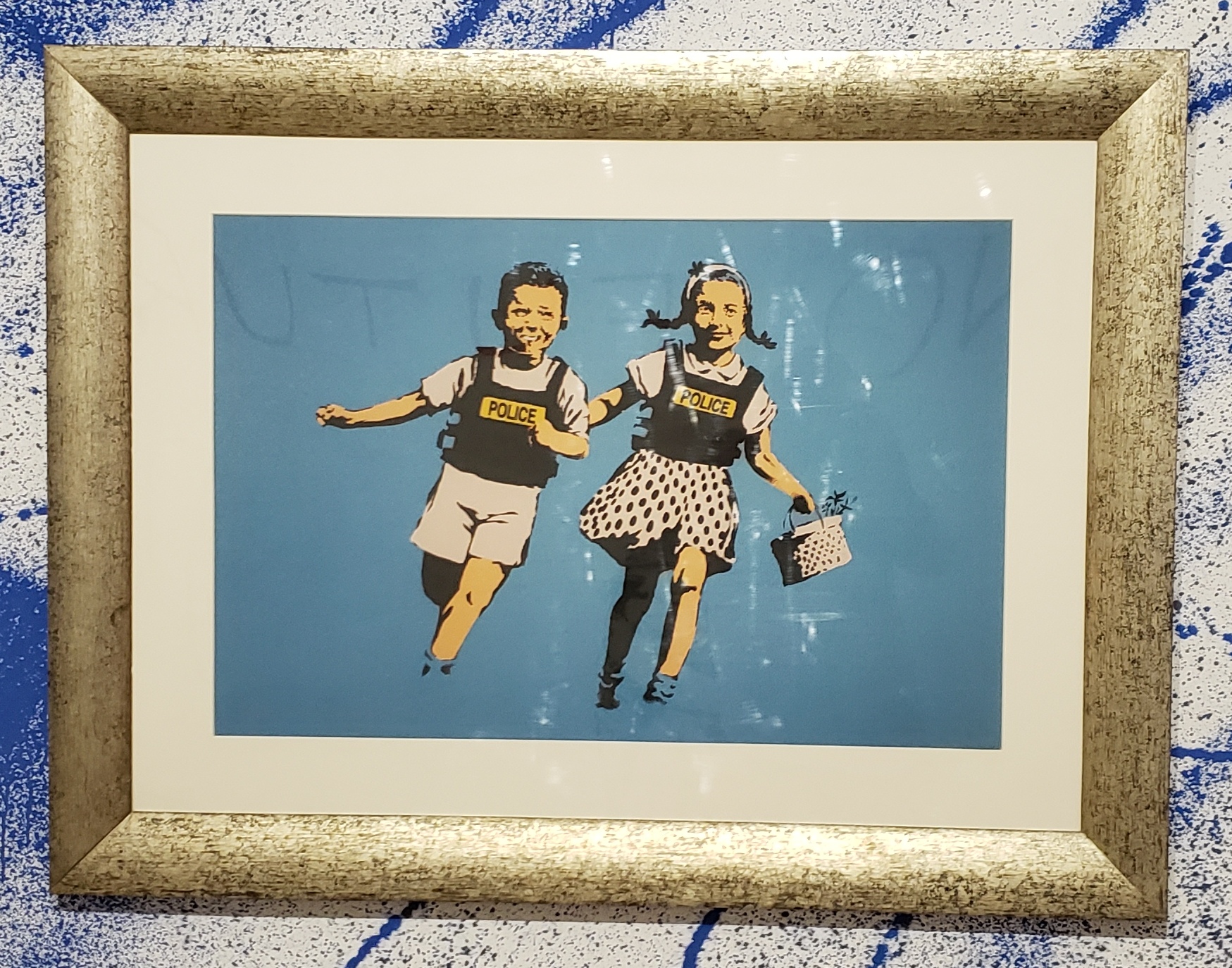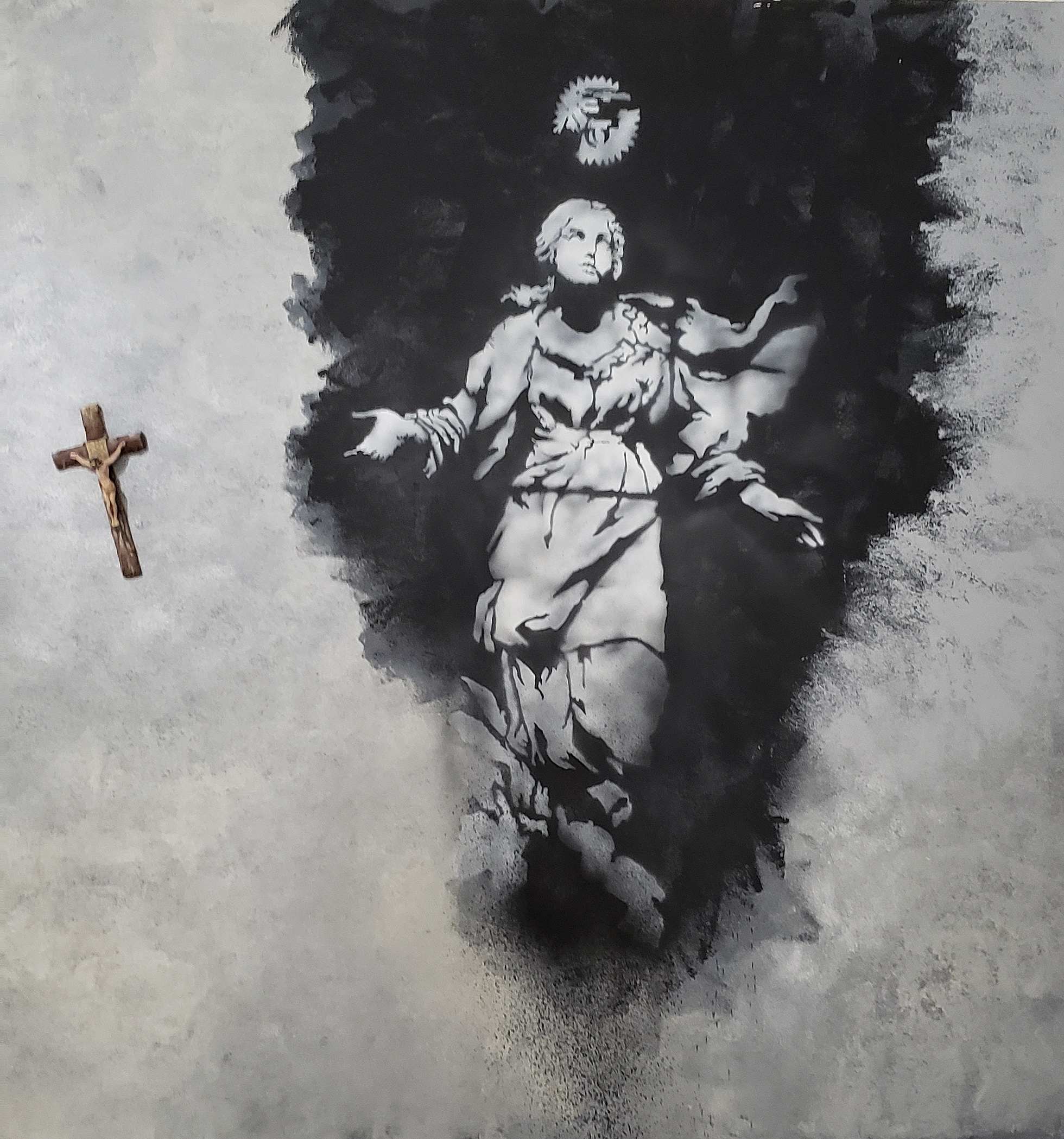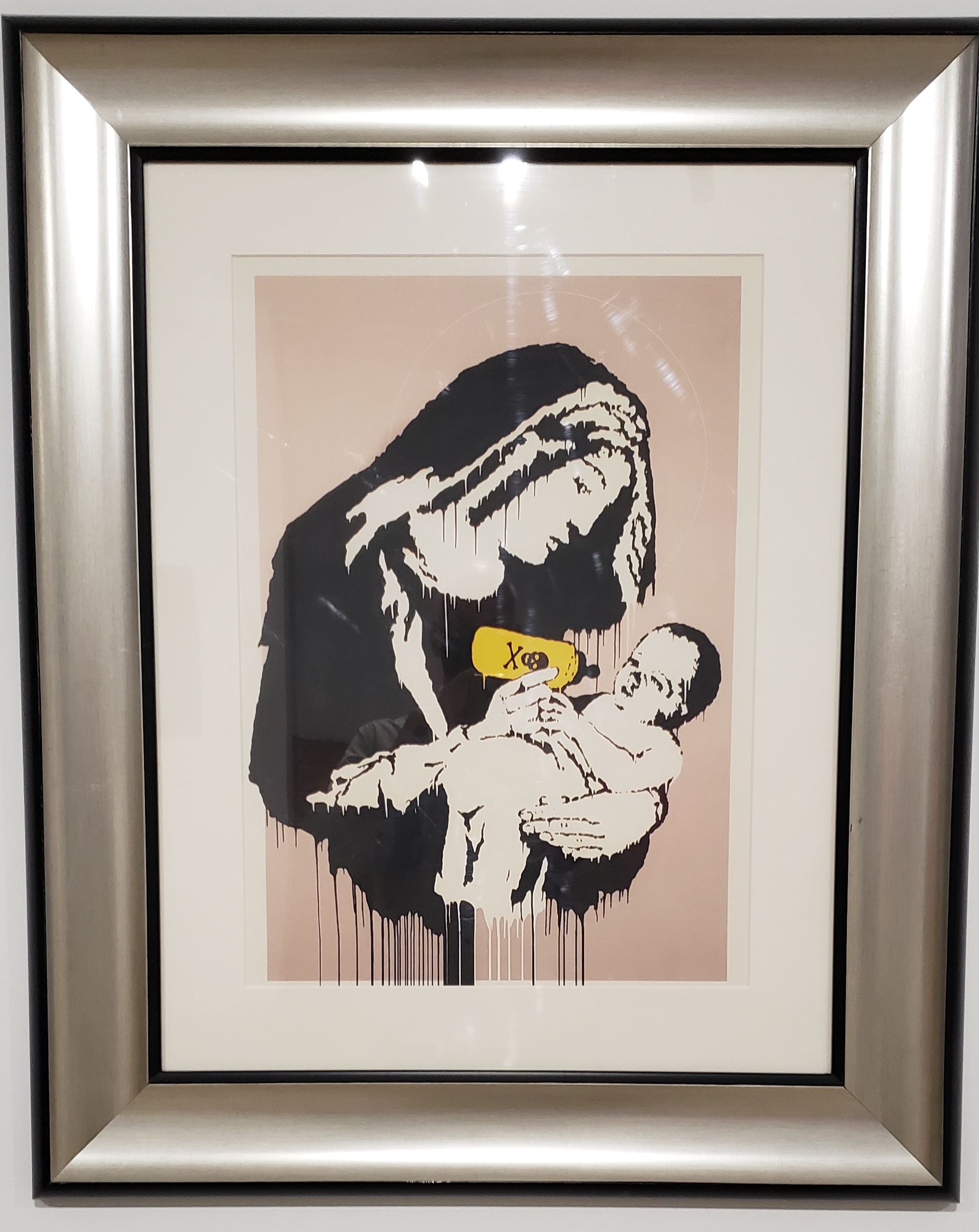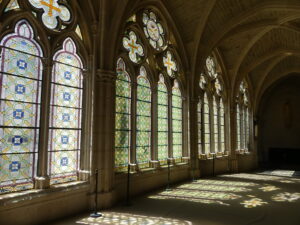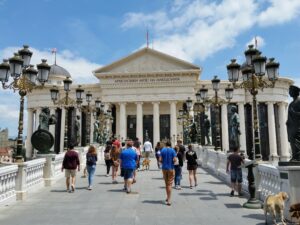In brief: As a fine exhibit here showed, Banksy keeps meeting walls he likes, on which he likes to critique what he doesn’t like about our world.
He kept meeting walls he liked. And, for over 25 years, the graffiti artist Banksy used those walls to critique what he didn’t like – social inequities, religious humbug, the horrors of war, the misuse of power by those who govern and those with money, the commercialization of life and art. He was an outcast – a rat in his own repeated symbol of himself – hounded by authorities for defacing public property with a medium and message that challenged their authority. For years, much of his work was rubbed out, whitewashed except for his record of its creation.
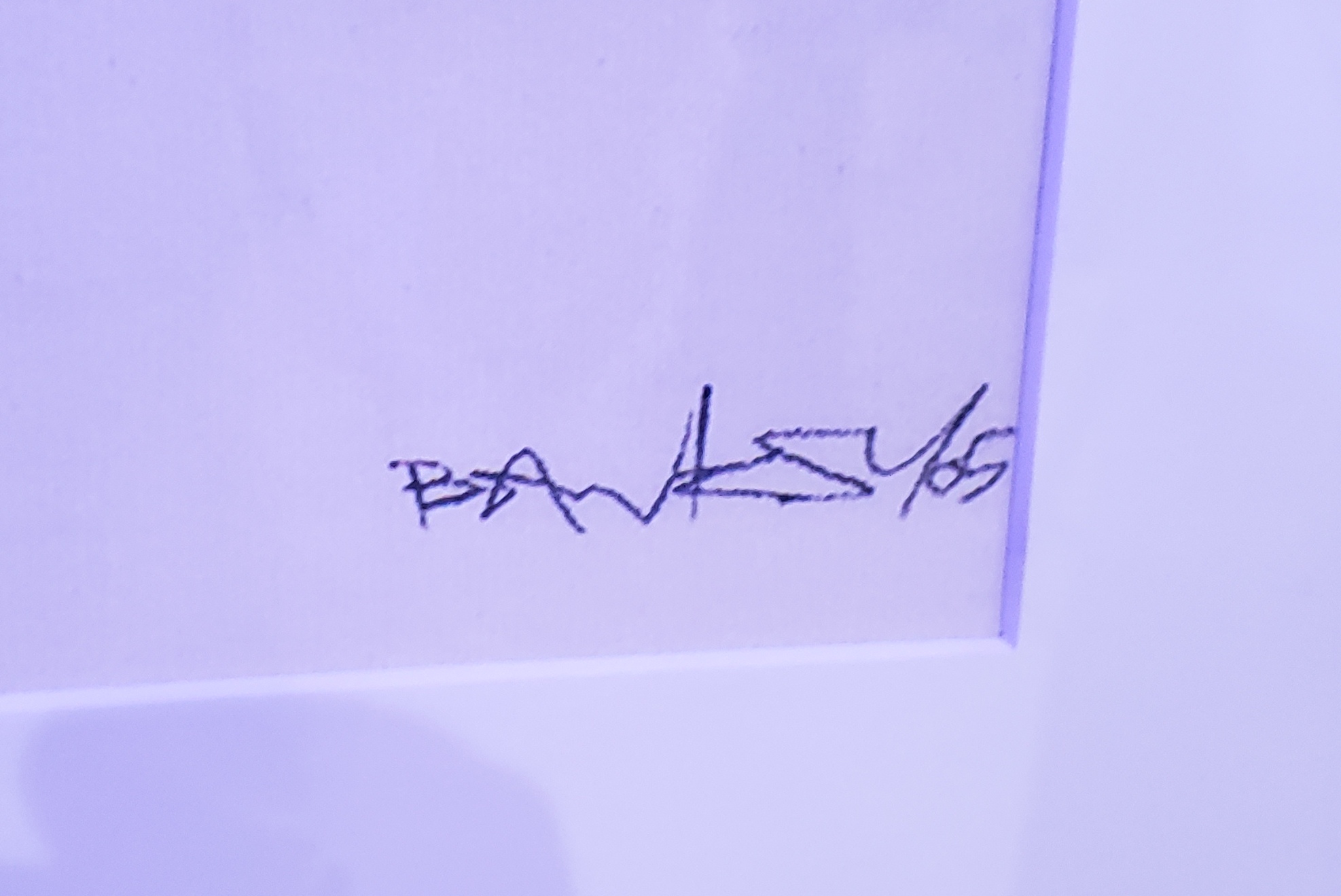
Now he is lauded in museum exhibitions like the excellent collection of reproductions that we just visited near Saldanha in the Capsule Gallery. His works sell for hundreds of thousands of dollars. Owners of the actual walls he used carefully protect his defacements, or move those walls to safer settings. Yet, in spite of success, he seems to have sharpened his brush, refined his stencils, and found new surfaces to continue challenging what he dislikes still about the world’s inequities.
Cameraman and Flower – Here we find another ecological lament for the destruction of natural beauty in order to exploit it. The man hardly seems a tourist, though the image implicates all of us. The stenciled image even suggests a militarized dress, not surprising for this anti-war artist. But here, as other works in the exhibit also suggested, we see the media transforming reality into a false image, destroying it in order to package it for popular consumption. Notice that the dirt from which the flower is wrenched is not painted, but lies outside the wall, drawing us more into the picture.
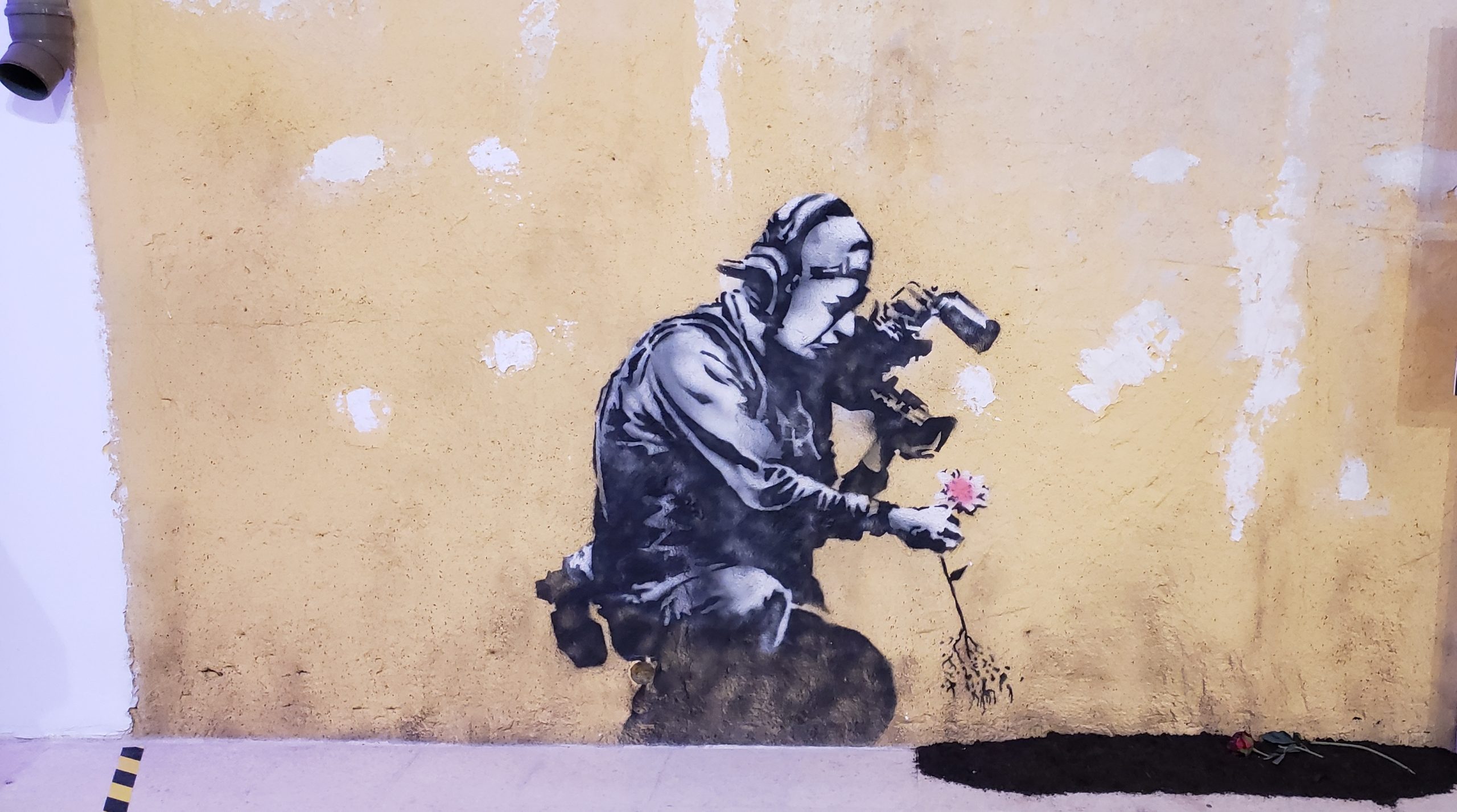
Sale Ends – In this irreverent image, these stricken figures seem to pray for relief, as if at the foot of the Crucifixion, because material goods supplant moral concerns. Perhaps even religion caters to our consumer attitudes.
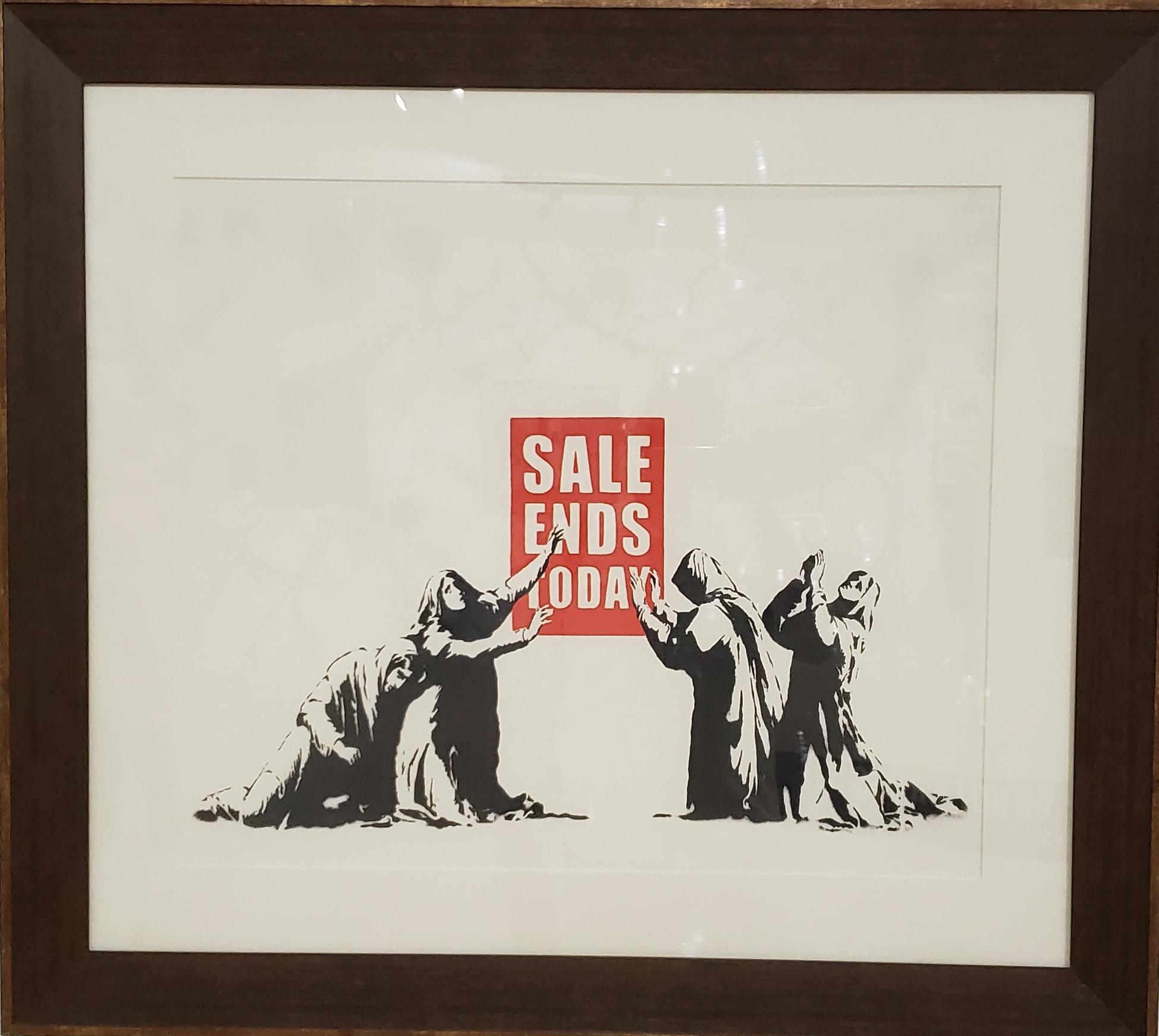
Walled Off Hotel (room) One of Banksy’s most ambitious “installations” was the 2017 decoration of ten rooms at a hotel in Bethlehem in the West Bank, overlooking the wall separating the populations. With this pun-labelled work, he marked the 100th anniversary of British occupation in the area, and lamented the conflicts which endlessly remained there. In this room, reproduced at the exhibit, various parodies of old master art works and images with central Banksy themes provide historical context and commentary. As does the dominant image behind the bed. A Palestinian and Israeli soldier face off with the only physical weapons they have in a bedroom – pillows, where fortunately only feathers fly, not bullets.
Show me the Monet – With another punning title, Banksy takes Monet’s famous image of Giverny garden and literally trashes it. The ecological message is clear.
But his use of the shopping carts and traffic cone reminds us how art should not just be a commercial transaction, but should challenge our beliefs and pieties.
Girl with Balloon – The usual targets of Banksy’s work are gone from this forlorn image that may be the most familiar to many – reproduced here as it originally looked on a London embankment, but it has found other looks and locations since then. A strong wind yanks the heart-shaped balloon from the grasp of a girl, an innocent, whose expression is stricken but whose posture suggests she is resigned to the loss. What separates us from our childhood? From our dreams?
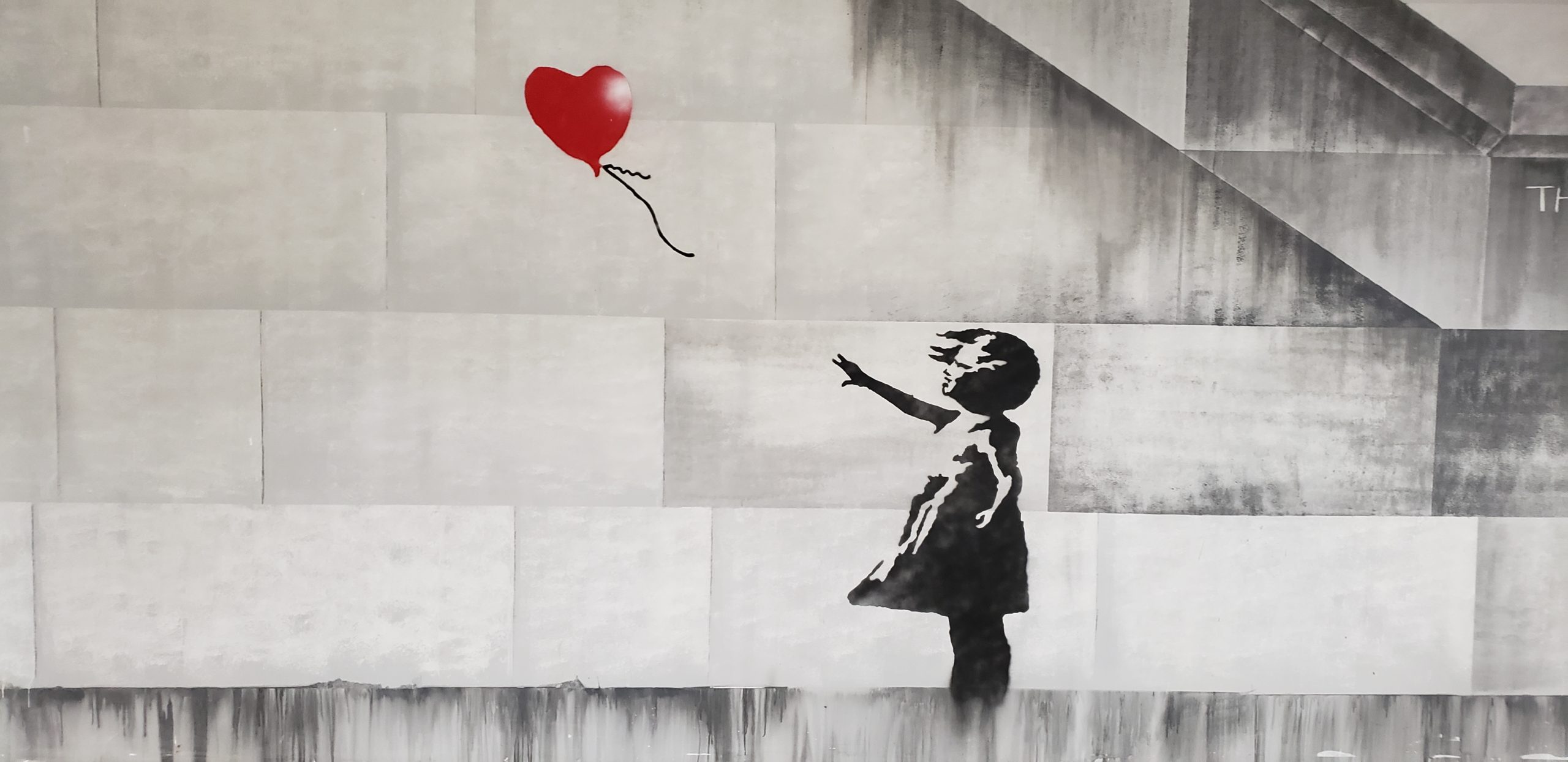
Police Kids – Children repeatedly appear in Banksy’s work as innocents caught up in the traps of life.
Here, in an unusual color image, their carefree delight is subverted by the need to wear protective body armor in a pose similar to other images of police chasing suspects, suspects like graffiti artists and other social outcasts.
Even the bland storybook children offer a bit of social critique as well.
Madonna with a Gun – Banksy is prepared to offend and challenge religious attitudes, especially in conflict with social realities. This classically depicted Madonna, which has hovered on a wall in Naples since 2019, rises to heaven in a black whirlwind. She is topped not by a halo, but a gun drawn on a seal toward which she reverently gazes. The ever-present threat of violence hovers uncomfortably atop religious values.
Little Girl Covering a Swastika – From his work on the Paris streets in 2018, this is one of the richest pieces in the exhibition. A child of color turns to us in the middle of an effort to efface the symbol of racism and oppression with surprisingly sophisticated floral patterns. But all is not so simple. The box platform seems very unstable. The blanket at the bottom suggests homelessness and inequity. The cast-off teddy bear, an innocence lost permanently or temporarily. And the child’s ambiguous expression is startlingly uncertain. Among the visitors to the gallery was a family, where the father took a good deal of time explaining the context and complexity of images like these to his pre-teens. Well done!
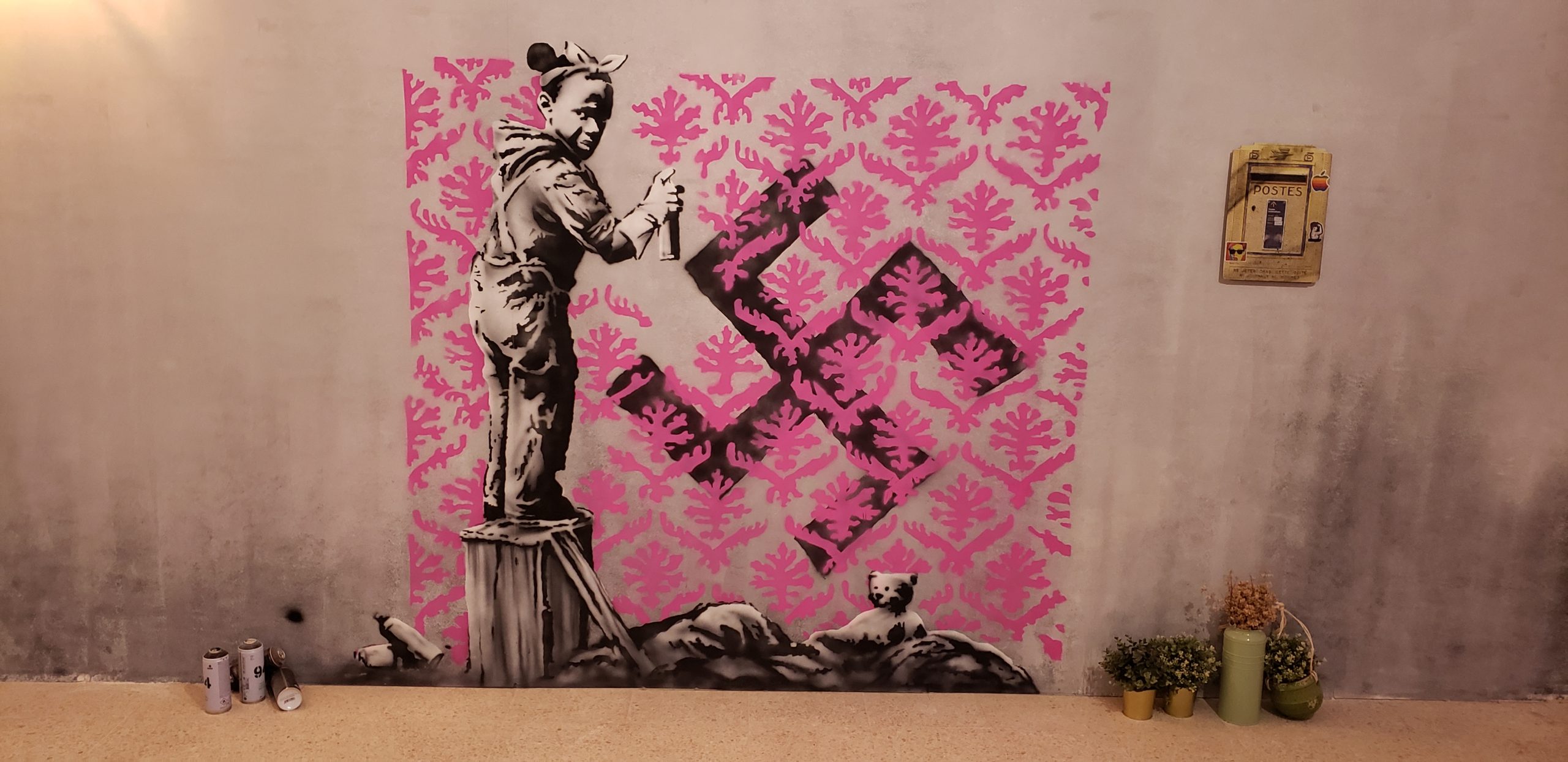
Toxic Mary – This seemingly simple image of Mary and child is transformed by the feeding – and that bright yellow bottle.
In a personal sense, the toxic feeding is the problem for all childish innocence, of helplessness in their upbringing.
Another layer comes from the role of the church in harming other societies in the pursuit of wealth. A third meaning comes from the controversial corporate promotions of formula feeding in lieu of breast feeding for mothers in “third-world” countries, undermining the transmission of natural immunities.
(To enlarge any picture above, click on it. Also, for more pictures from Portugal, CLICK HERE to view the slideshow at the end of the itinerary page.)


